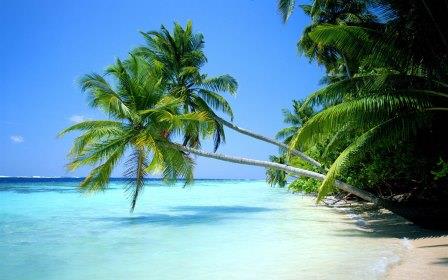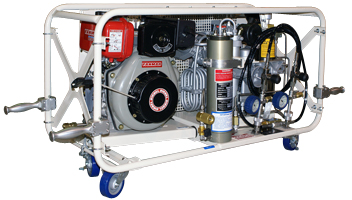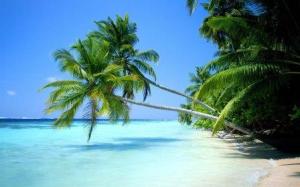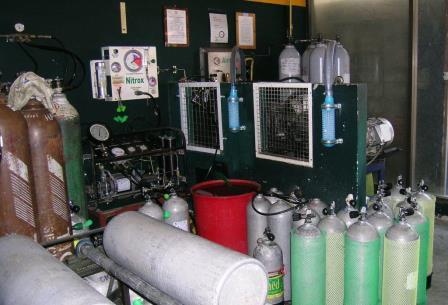Overfilling scuba tanks in the tropics – A good or a bad idea?

To overfill or not to overfill scuba tanks – that is the quesion! …
Legal equirements for DOT3AL3000 scuba tanks from the American Code of Federal Regulations 49CFR Parts 100-185
49CFR 173.301a (c)
“Cylinder Pressure at 21 degrees ‘C’. The cylinder pressure at 21 degrees ‘C’ (70 ‘F’) may not exceed the service pressure for which the cylinder is designated …”
49CFR 173.301a (d)
“Cylinder pressure at 55 degrees ‘C’ (131 ‘F’). The pressure in a cylinder at 55 ‘c’ (131 ‘F’) may not exceed 5/4 times the service pressure…”
49CFR 173.302a(b)
“A DOT 3A, 3AX, 3AA, 3AAX, and 3T cylinder may be filled with a compressed gas, other than a liquefied, dissolved, Division 2.1, or Division 2.3 gas, to a pressure 10 percent in excess of its marked service pressure …”
Analysis:-
Charles’s law predicts the following variation of cylinder pressure with cylinder temperature for a cylinder filled to the specified service pressure at 21 degrees Centigrade(70 ‘F’)
| Deg ‘F’ | psi | Deg ‘C’ | bars | % |
| 0 | 2603 | -18 | 180 | -13 |
| 10 | 2660 | -12 | 183 | -11 |
| 20 | 2717 | -7 | 187 | -9 |
| 30 | 2773 | -1 | 191 | -8 |
| 40 | 2830 | 4 | 195 | -6 |
| 50 | 2887 | 10 | 199 | -4 |
| 60 | 2943 | 16 | 203 | -2 |
| 70 | 3000 | 21 | 207 | 0 |
| 80 | 3057 | 27 | 211 | 2 |
| 90 | 3113 | 32 | 215 | 4 |
| 95 | 3142 | 35 | 217 | 5 |
| 100 | 3170 | 38 | 219 | 6 |
| 110 | 3227 | 43 | 223 | 8 |
| 120 | 3283 | 49 | 226 | 9 |
| 130 | 3340 | 54 | 230 | 11 |
| 131 | 3346 | 55 | 231 | 12 |
Observations
Typical compressor operator practice in the tropics is to overfill a scuba tank by approx 250 psi/18 bars more than the 3,000 psi/207 bar service pressure to ensure the customer gets a 3,000 psi/207 bar fill once the cylinder cools down to local ambient temperature. Often, the final 3,250 psi/225 bar safety valve is incorrectly used as the full cylinder indicator to remind the compressor operator to replace the full cylinders with empty cylinders. How do pressures and temperatures created by this practice compare with the CFR requirements?
Example ambient conditions – Thailand; 95 F/35 degrees ‘C’
A single cylinder filled with a medium size 9 scfm/250 liters per minute dive shop compressor until the compressors 3,250 psi/225 bars safety valve blows off. Time to top up the partially filled tank is tank is approx 8.5 minutes. Fill rate approx (330 psi/22.7 bars per min).
Cylinder Temperatures observed when filled in still air:-
Starting fill (500 psi/35 bar remaining). Cylinder Temperature(ambient) = 95 F/35 degrees centigrade
Completed fill (3,250 psi/225 bars safety valve). Cylinder Temperature(typical external mid cylinder wall) = 122 F/ 50 degrees centigrade
Typical drop in pressure observed during cooling back down to 95 F/35 degrees ‘C’ 175 psi/12-15 bars
Final stabilized fill pressure at 95 F/35 degrees ‘C’ = 3,045-3,090 psi/210-213 bars, which is within the maximum allowable ‘Charles Law’ cylinder pressure for a DOT-3AL3000 at 95 F/35 degrees ‘C’ which is 3,142 psi/217 bars

Conclusions
- The common practice of over-filling a DOT 3AL3000 scuba cylinder until the 225 bars safety valve blows off in tropical climates only does not demonstrably create cylinder pressures that exceed those recommended by the CFR at any time either during filling process or after the cylinder has cooled down to local ambient temperature of 95 F/35 degrees ‘C’
- The fill rate for a single DOT 3AL3000 cylinder when pumped from a typical dive shop 9 scfm/250 liters per minute compressor is also within the 20-40 bar/min(300-600 psi/min) recommended by the cylinder manufacturers.
- Overfilling a scuba tank in colder climates is not recomended at all. In cold climates found in the Northern USA, Canada, Europe it is advisable to under-fill the cylinders so that the internal pressure does not exceed the rated pressure should the cylinder become warmed to 70 degrees ‘F’/ 21 degrees ‘C’
Important notes clarifying these conclusions together with warnings < READ THIS !!! >
- The above conclusions are controversial, represent a special case, and should not be taken as a license to blindly overfill any scuba tanks that enter your compressor room for filling until the safety valve blows in all ambient temperatures! For example, If you fill until the safety valve blows in low ambient temperatures such as 41 F/ 5C, then, when the tank warms up to 70 F/21 C, the cylinder will be filled to well in excess of its specified working pressure.
- Safety valves are not designed to be used in this manner. If they are used to replace an attentive operator and caused to blow off many times a day, they will quickly wear out and need to be replaced. This can get expensive.
- Large temperature rises during filling can be reduced by dividing the compressors output between several tanks – ie, by using multiple filling hoses connected to the same manifold, or by using a ‘Y’ adapter.
- The safer, recommended working practice is to only ever fill a tank to the specified working pressure stamped on the cylinder neck. It is a safe decision to never fill beyond this pressure. Should the cylinder fill pressure drop 250 psi/18 bars during cooling (as it will surely do so in accordance with Charles Law), then later top up the cooled down ambient temperature tank another 250 psi/ 18 bars, to the specified final working pressure. No further drop in pressure will be observed.
Author: Stephen E Burton. Chartered Engineer.
Managing Director, Easytek Engineering Services Co Ltd.,
///
Learn how to: Inspect your own scuba cylinders
Learn how to: Repair & service Bauer & Coltrisub high pressure breathing air compressors used in the scuba industry
Learn how to: Repair all the equipment in a Dive Center – Dive Technician Training


